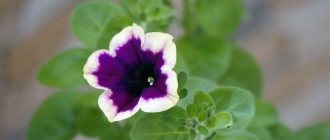Author: Elena N. https://floristics.info/ru/index.php?option=com_contact&view=contact&id=19 Category: Garden plants Published: February 07, 2019Last edits: November 04, 2020
Hybrid tea roses are a group of varieties obtained by crossing a Chinese tea rose and a remontant rose. The hybrids turned out to be very successful: the shape and aroma of the flower, the wide palette of colors of these garden roses are simply mesmerizing, and their flowering can last from spring to late autumn. Even beginners can grow hybrid tea roses with success, as they are easy to care for. But, like any other plant, plants in this group have features, which we will talk about in this article.
The best varieties of hybrid tea roses
The differences among the varieties presented below are in the height of the bush (50-90 cm), shape (ranging from spreading to narrow pyramidal), leaves (thick, matte, shiny). The flowers are often double, consisting of a large number of petals - from 20 to 128. The diameter of the opened bud can reach 15 cm.
One peduncle holds 5-7 flowers, its length is 20-80 cm. The rose exudes a pleasant aroma that fills the garden. In central Russia, flowering begins at the end of June and continues until late autumn. The winter hardiness of this variety is lower than that of the remontant group, but it survives the cold well under cover.
We list the names of popular varieties of roses with the addition of photos and a brief description of the characteristics:
- American pride is a tall bush (on average 80 cm) with large dark green leaves. The flowers are dark red, velvety, and goblet-shaped. They reach 15 cm in diameter, there are 40-50 double petals. The aroma is weak, they can open singly or in inflorescences of 5-7 buds.
- Alexander is a tall bush (up to 100 cm), spreading, with large shoots. The flower is bright red, fiery. It has the shape of a bowl, when opened it reaches a diameter of 10 cm. It emits a weak aroma, terry petals in the amount of 22-27 pcs. The variety is characterized by increased resistance to frost and fungal diseases.
- Baron Edmond de Rothschild - the bush grows up to 110 cm, but is quite compact. The foliage is large, leathery, and glistens in the sun. The opened bud has a goblet shape and a diameter of up to 11 cm. The petals are double (45-52 pcs.), two-colored: purple-crimson on the outside, raspberry-pink on the inside and turning white towards the base.
- Wienerwald is a dense, compact bush up to 80 cm tall. The flower is goblet-shaped, up to 10 cm in diameter. The bud contains 55-65 double petals of salmon-pink color.
- Norita is a spreading rose bush that grows up to 3.5 m tall. Rich red, densely double petals (on average 77 pieces in one bud) emit a faint aroma. The open flower reaches 12 cm in diameter. Flowering is abundant and continues until frost.
- Evening Star is a bush up to 80 cm tall with large, dark green leaves. The petals are double, white with a yellowish base, there are 40-45 of them in one bud. The open flower reaches a width of 11 cm and emits a noticeable aroma.
- Doris Tistermann - upright bushes up to 135 cm with large, bronze-green leaves. Flowering is abundant: the open bud reaches up to 12 cm in diameter, with orange petals.
- Cordes perfecta - compact bushes up to 80 cm tall. The flowers are cream, yellow at the base and have a dark red iridescence. Their diameter is 11-12 cm, the petals are densely double (60-70 pieces per bud). Flowering is abundant, the variety is winter-hardy.
- Lady X is an erect bush up to 120 cm with dark green, leathery leaves. The flowers are pink-purple, goblet-shaped with a high center. The open bud has up to 50 dense petals and has a diameter of 12 cm. They appear one at a time or in inflorescences of 3-5 pieces.
- Nicole - the rose grows up to 110 cm, has a long flowering period (from May until frost). The petals are burgundy on the inside and white on the outside and show excellent cutting stability. The flower has about 45 petals, opens to 12-16 cm in diameter, and exudes a light and pleasant aroma.
Tea rose - description and photographs
Tea rose is the most beautiful rose from this line of varieties, has a delicate aroma, and its flowers have a very soft and delicate shade of petals. These flowers are often used in bouquets. The tea rose has very thin but strong stems, as well as large buds. The size of the plant largely depends on the variety of rose. Tea roses are low-growing (from 50 cm) and climbing (up to 2 meters and above). The leaves have a noble dark green color and an oval shape. Each tea rose flower has up to 60 petals. The shape of the bud depends on the variety: it can be long-sharp or round. The range of shades of tea roses is large thanks to the work of breeders, but the pale pink shade remains classic. When the rose is fully opened, a yellow core is visible in the middle.
The tea rose was brought to Europe from China in the 18th and 19th centuries.
Selecting a seedling and area for planting
Roses are quite capricious and their cultivation cannot be done without increased attention from the gardener. Proper care ensures 6-7 buds per peduncle and a long flowering period.
For planting, you should choose a sunny place, sheltered from strong winds and drafts. It is optimal to plant the rose next to buildings that create a barrier or taller bushes. It is not recommended to plant the plant next to other rosaceous representatives of the garden: raspberries, cherries, pears, rowan.
The soil is slightly acidic, loose, and quite nutritious. Planting is carried out in the spring, which provides time for rooting before winter. Soil fertilization is carried out in the fall, with a reserve for next year. For these purposes, humus or mullein is used.
When purchasing a seedling, you should pay attention to the following factors:
- the rhizome is well developed and branched;
- two or more stems with a diameter of at least 6 mm;
- the kidneys are at rest;
- there are no pale and excessively long shoots;
- The stems are mature, strong, and green in color.
Thanks to a brief description and photo of the names of varieties of hybrid tea roses mentioned above, it will be possible to compare them by the appearance of the flower. However, the compatibility of the variety with the planned growing region should be additionally studied.
Reproduction methods
Two popular methods are used to propagate a hybrid rose yourself.
- Cuttings.
The semi-lignified shoot is cut off and divided into small cuttings about 6 cm long. Each shoot must have at least one bud and leaves. The shoots are slightly dried and the lower cut is sprinkled with a stimulant for root growth. Plant in nutritious soil and cover with glass jars, plastic bottles or film. Watering, spraying and ventilation are carried out regularly. For the winter, young plants are carefully covered; next season they are grown or transplanted to a permanent place, depending on the appearance of the bush.
- Graft.
Rose hips no older than three years are most often used as a rootstock for varietal roses. It is better to carry out work in the second half of summer. Budding is performed with a sleeping eye. On an annual faded shoot of a varietal plant, cut blanks approximately 1 cm wide with 2-3 buds. Leaves and thorns are removed from the resulting scion. In the middle part of the cutting, a bud is cut off with a sharp knife along with a piece of bark and cambium about 3 cm long. The soil near the rose hip bush (rootstock) is raked and the root collar is exposed - the place where the trunk transitions into the root. Carefully wash away the dirt in this area, otherwise the graft may not take root. A T-shaped cut is made on the root collar so that the scion and rootstock are tightly connected. The grafting site is wrapped with plastic wrap, leaving the bud open. The root collar is sprinkled to hide the budding site.
It is not easy to propagate roses, so ready-made seedlings are often purchased for planting. It is better to purchase them in a specialized store or from a trusted seller. When purchasing, pay attention to the appearance of the bush. Choose healthy plants with a well-developed root system and dormant buds. The number of stems is 2 or more. They should be strong, green, with a diameter of at least 6-7 cm.
You can buy rose bushes in March and store them in damp sand or soil in a cool room until planted outside.
Planting in open ground
purchased in advance is stored in a container with damp soil or sand, placed in a cool place - a basement or refrigerator. Planting outdoors is carried out in May-June; it is important to do it before the heat sets in. In this case, it is necessary that the earth warms up to +12 °C.
Before the procedure, the roots of the seedling are slightly trimmed and placed in water for 2 hours to drink moisture ; you can also place the entire plant in the liquid.
The depth and width of the hole should allow the roots of the plant to be placed freely without bending. Half of the space is filled with a mixture of organic fertilizers (peat, humus, cow manure) and sand - equal proportions. Dry soil is pre-wetted.
Next, the seedling is placed in the recess. Here you should pay attention to the thickening - the site of grafting. It needs to be lowered 2-3 cm underground. Then the missing soil is filled in and compacted. An earthen roller is built around the plant, which will prevent water from spilling.
Growing roses in pots outdoors
Greetings, dear friends!
It is generally accepted that roses are best grown in open ground. But what to do if you want to decorate with roses places where it is impossible to plant plants? A good option is growing roses in pots
or containers, which makes it possible to mobilely place bushes in places chosen by the gardener and bring your bold landscape ideas to life. With proper care, roses will certainly delight you with abundant flowering and will decorate any front garden, veranda, loggia, recreation area or garden structures.
Today, many varietal forms of miniature and hybrid roses have been developed for pot cultivation, which are characterized by small size, low foliage, voluminous buds with long and beautiful flowering. Some varieties of ground cover, hybrid tea varieties and compact climbing roses adapt well to growing in garden containers.
The formation and planting of future flower arrangements begins with the selection of a container for roses. The size of the container should be selected taking into account the varietal characteristics and the final growing season of the adult plant. Adult rose bushes have a deep and powerful root system, so the garden pot must be at least half a meter in height and 60 cm in diameter. Accordingly, the larger the plant variety chosen, the larger the container should be so that the crop has enough space to develop its life cycle.
With proper agricultural technology, roses grow with equal success in containers made of various materials: ceramics, concrete, wood, stone or plastic. When placing garden containers with flowering shrubs, you should remember that they love sunny and ventilated places - this will significantly reduce the likelihood of flowering plants being damaged by pathogenic strains of fungi and parasitic microorganisms.
Spring is the best period for planting roses. A gardener should not place several plants in one “dishes”, since in a small space they will draw nutrients onto themselves and dominate each other, which will affect the flowering and shape of the bushes. The soil substrate for roses should be light, loose in consistency and rich in mineral nutrition. It is advisable to purchase ready-made peat soil or mix garden soil with sand, chalk and wood ash yourself for selected seedlings. Expanded clay, pieces of bark or small brick chips are well suited for drainage, which will prevent stagnation of excess moisture, silting, provide aeration and protect the root part of the shrub from rotting.
When growing roses in pots, it is necessary to feed the plant twice a season with a full complex of NPK fertilizers: the first time at the leaf blooming stage, and then at the end of June.
Unlike open cultivation in flower beds, growing roses in pots
outdoors has a small disadvantage - periodic control of plantings is required, associated with watering and natural irrigation with precipitation. In a small volume of earthen potting soil, the roots dry out faster from the sun and, conversely, from overwatering and precipitation - they are more prone to fatal rotting. Therefore, the water volume received by the bushes, irrigation days and weather influences should be kept under control.
See you later, friends!
- How to properly cover roses for the winter Good afternoon, dear friends! It's time to remember how to properly cover roses for the winter, since the first steps for...
- Planting roses in autumn Hello, dear friends! October is considered the optimal calendar period for planting roses in the fall. The seedlings planted at this time have time to form before.
- Growing tree peonyPlanting and growing tree peony Greetings, friends! Most amateur gardeners consider peony to be a capricious plant that is difficult to grow without appropriate agricultural technology.
- Growing a rose from a given bouquetGive a rose a “second life” Hello, dear friends! The rose is the most poetic and desirable flower. The ancient Indians grew it for many thousands of years.
Features of watering a hybrid rose
The queen of the garden needs rare, but sufficiently voluminous watering. A young bush requires more moisture. Immediately after planting, water is added every 2-3 days. However, you should be careful and avoid over-watering - approximately 3-5 liters are needed per bush. When the plant is established, the period is increased to 1 time per week and guided by the drying of the soil.
Water is especially needed during bud formation and at the time of active flowering. If there is not enough liquid, the shoots develop poorly, the flowers decrease in size and lose their beauty.
It will be useful! An adult bush consumes about 10 liters of water, preferably rain or melt. The liquid should not get on the foliage and buds, otherwise the risk of developing fungal diseases increases. During hot periods, the water should be warm and added in the evening. In autumn, watering is needed only if there is a complete absence of rain.
The ground around the bush must be loosened and weeded in a timely manner. Loose soil retains moisture well and oxygen moves. The procedure is carried out on average once a month.
Flower care
For the constant blooming of buds and the growth of young shoots, roses need to be fed. This must be done at least 6 times. Fertilizers should include mineral and organic fertilizers.
For organic ones, you can use a diluted solution of mullein or bird droppings. You can use a solution of leaf compost. Other fertilizers used include the following microelements: nitrogen, phosphorus, magnesium, potassium.
Fertilize for the first time at the very beginning of the growing season. It is made from a solution with nitrogen-containing elements. For example, nitroammophosphate. The second nitrogen fertilizing is done after two or three weeks. During the formation of buds, you need to use solutions with phosphorus-containing elements.
After the end of the first flowering, fertilizing with potassium fertilizers is needed. All fertilizers, except nitrogen ones, can be alternated. Nitrogen is used for the growth of leaves and young shoots. Therefore, closer to autumn there is no need to use these fertilizers. But potassium fertilizers need to be increased: they are needed to restore strength after flowering.
We recommend that you read the article: Miniature roses.
Watering
No less important than fertilizing and watering. If there is insufficient watering, the leaves from the bush will begin to fall off, and the buds will stop opening. There will also be no growth of young shoots.
In addition, this lack of moisture can greatly affect varietal qualities. The color of the petals, the size of the blossoming bud may change, and the aroma becomes unstable.
Just don't go too far. Overwatering won't do you any good either. Prolonged exposure of the root system to water leads to rotting of small roots and the formation of a black leg at the base of the stems.
Watering should be regular, abundant during the formation of buds and during flowering. They do this once a week. If the weather is very dry, water twice a week. In spring and autumn you need to water once every two weeks.
This is the case if there is no rain. The next day after watering, loosen the soil. You can put a layer of mulch around. This way the moisture will be retained longer and the roots of the roses will not overheat so much in hot weather.
Growing roses requires a lot of effort and patience. But when you look at the blossoming bushes and inhale the amazing aroma, you realize that all your efforts were not in vain. This beauty is worth all the effort!
Fertilizing
To ensure abundant and long-lasting flowering of hybrid tea roses, it is necessary to perform timely and correct fertilizing. The combination of organic and mineral fertilizers demonstrates excellent efficiency. The former improve the composition of the soil and nourish the rose, the latter enhance its growth and make flowering last longer.
The first year, root feeding is excluded - it was carried out at the time of planting. In autumn, you can add nutrients to the leaves: dilute 1 tbsp. l. potassium sulfate in 8 liters of water.
The following year, fertilizing is carried out in the spring, which allows for increased growth. Mineral dry fertilizers are used, sold in specialized stores. First, the bush is watered with water, then the fertilizer is scattered around - they retreat 10 cm from the central stem. The substances are embedded in the ground and watered again.
After 7 days, organic matter is added: 5 liters of mullein is placed around the bush and mixed with the soil with a rake. At the end of the procedure, watering.
During the period of bud formation, organic matter is again introduced. An infusion of chicken or cow manure is perfect for this case It is prepared in advance: 1 liter of manure is taken and diluted with 8 liters of water. The mixture is infused for 2 weeks, then diluted with water in a ratio of 1 to 5 and watered.
At the same time, foliar feeding is carried out with an infusion of wood ash. The last stage of fertilizing this variety of roses occurs in September - organic matter is added in any form.
You need to start with the basics: how to care for decorative roses from the moment of purchase
Photo from website: nice-flowers.com
Many people, having seen photos of roses, imagine care at home only as timely watering, but this is far from the case. Roses really need to create the most comfortable conditions for flowering. Moreover, this process begins, oddly enough, right from the moment you brought the new “inhabitant” of the window sill into your house, not a minute later.
Adaptation is very important
Most often, roses are bought in stores that are just in the flowering state, so they definitely need to be provided with a high-quality adaptation period so that all your subsequent efforts are not in vain. That is, when considering the question of how to grow roses on the balcony, you should start from the very beginning - give them peace and freedom in the first days in your apartment. Under no circumstances should you immediately replant roses brought from the store, because they definitely need to get used to the microclimate in the room.
Photo from the site: liveinternet.ru
It would be advisable to carefully consider the conditions in which your plant was previously and repeat them as accurately as possible at home. To do this, you can simply consult the seller; usually they have all the information you need. The combination of light and shadow, preferred humidity, temperature, watering regime, all this needs to be known in advance, of course, if such an opportunity exists. Getting used to it can last up to two weeks, and during this time you need to protect the plant from drafts, avoid overheating in the sun, and so on.
Read also: Is it possible to grow impatiens as a houseplant?
Simple rose transplant at home
Real, professional gardeners recommend replanting the rose into a new pot only when they have fully recovered after moving from the store to your home.
It is recommended to replant the rose at a time when the growth phase of the moon is observed according to the lunar calendar. This will give the plant a better chance of growing strong and healthy.
All your actions should be as clear and accurate as possible, and if you are completely honest, even gentle. Not a single root should be harmed, and in general, the root ball of earth that will certainly form is best not to touch at all, but simply move it to a new place. It is not recommended to touch even fertilizer granules, which may well be there, but you should definitely remember this. Before you start replanting, you must first prepare special soil:
Photo from the site: liveinternet.ru
- Garden soil - four parts.
- Humus soil - four parts.
- River, washed sand - one part.
You also need to immediately acquire some special fertilizers for roses, which are available in almost every gardening store. If you yourself do not dare to prepare the soil for planting, you can buy ready-made soil in the store, the main thing is to monitor its quality, because many supermarkets mix unknown things into the soil, and then it will definitely not end well.
The right potty is important
You should not think that the more pots you buy for your rose, the better; this is a misconception that needs to be gotten rid of. The correct pot should be just a few centimeters larger and taller than the one in which you brought the plant home. Ceramic products, that is, clay, are best suited for roses. A few hours before planting, new pots should be soaked in warm, clean, settled water.
Photo from the site: orchardo.ru
A drainage is placed at the very bottom of the pot, which is most often made of expanded clay, and soil is poured on top of it. The first layer of soil must be mixed with fertilizer, and clean soil must be laid on top of it. The rose is carefully removed from the old pot and transferred to a new place, sprinkled with a previously prepared mixture. After transplantation, the plant must be placed in the shade, as it has experienced serious stress, and it is best to place it on the north side. After a day, the rose can be taken out onto the balcony, or the pot can be placed on the windowsill, but you must strictly ensure that there are no drafts, since flowers do not like this.
Trimming
Removing some of the shoots plays an important role in the proper maintenance of the rose. There are several trimming options:
- Strong - involves removing most of the shoot. As a result, only 3-4 buds remain. This option allows you to get large flowers in smaller quantities. The beginning of flowering is postponed to a later time.
- Weak - involves pruning the damaged or frostbitten upper part of the shoot. In this case, flowering is early, there are many buds, but the flowers are small.
- Spring is the most important. It is performed when the kidneys reach a size of 5-8 mm. On low-growing varieties, 3-4 buds are left with a total shoot length of 15-20 cm. On tall bushes, 8 buds remain on a total length of 30 cm.
- Summer - performed when the plant has bloomed. Withered buds and a small part of the shoot are cut off. In this case, the plant’s strength is not wasted on the formation of fruits, which will allow for more abundant flowering the next season.
- Autumn - necessary as preparation for the winter period. It involves removing unripe and damaged stems. This is done carefully so as not to cut off excess.
Important! All trimmed material is placed away from the bushes and burned in case pathogens are found there.
How to grow a rose at home: videos, tips and tricks
After you have done everything as needed, and the rose has taken root normally in your home, you should never relax. This fastidious plant needs constant care, which can only be provided by paying a lot of attention to the issue. How do real professionals advise caring for roses at home? Let's figure it out together.
Photo from the site: supersadovnik.ru
- The optimal temperature for growing roses is approximately twenty-five degrees Celsius.
- Roses should not be allowed to dry out, as they love abundant and timely watering. In particularly hot summer months, you can water the plant twice a day, choosing a time when the temperature is lower, for example, early in the morning and late in the evening.
- After watering, about an hour later, you need to completely drain the water from the pan; if there is glass in it, excessive moisture can lead to molding of the roots, as well as the appearance of various fungi.
- Withered flowers, as well as dried leaves and twigs, must be immediately removed using pruning shears, then the rose will bloom longer and more new inflorescences will appear.
- Carefully ensure that pests do not attack the plant; periodically conduct a thorough inspection of the stem, leaves and flowers.
Photo from the site: forum-flower.ru
With the onset of autumn, the frequency of watering should be gradually reduced, and after the temperature drops completely, the roses should be pruned, leaving no more than five buds. The sprouts remaining after pruning can be used for propagation by cuttings. The optimal temperature for roses in winter will be about fifteen degrees, which is quite enough. If you still don’t understand something, watch the video, which describes everything in the most detailed and accessible way possible.
Disease treatment and pest control
Hybrid roses are susceptible to various diseases, powdery mildew is especially common. Let's look at the most common diseases and methods of their treatment:
- Powdery mildew - manifests itself as a white or grayish coating on the leaves and shoots. The cause of the disease can be a high nitrogen content in the soil, lack of sunlight or too much moisture.
- 1. For prevention, use 40 g of soda diluted in a liter of water. The resulting solution is sprayed on the bush in the spring. The procedure is repeated 2 times a week until the end of June.
- 2. Treatment consists of the use of special drugs - Topaz or Fundazol.
- Rust is noticeable on the budding buds in the form of orange dust. Spots appear on the foliage that have a convex shape and a corresponding color. At the end of summer the spots turn black. The bush and soil should be sprayed with iron sulfate in March. If the buds have blossomed, the drug Ordan is used. The affected areas are cut out and burned.
- Black spotting occurs at the end of July. A characteristic sign will be not only black spots, but also falling leaves. If the plant tries to grow green mass again, it takes a lot of energy, which prevents it from preparing for winter and results in death or severe illness. Densely planted roses without sanitary pruning are most at risk. Treatment is similar to the previous case; the drug Skor is also suitable - it is used to eliminate the disease and prevent it.
- Gray rot - affects the buds and young shoots of hybrid tea roses. It looks like a gray fluffy coating. Plants that are located next to the strawberry planting often get sick; the latter is highly susceptible to the disease. Prevention consists of maintaining a distance when planting and watering exclusively in the evening. Treatment is similar to powdery mildew.
Among the pests, the plant most often attacks the green aphid. To fight, a soap solution is used: a bar of laundry soap is rubbed into a bucket of water, then the mixture is boiled for 15 minutes, infused and filtered. The substance is sprayed on leaves and shoots, the procedure is repeated after 7 days. If there are a large number of pests, you can use insecticides that are sold in the store.
Decorative roses: care at home involves creating a special atmosphere
Experienced gardeners know for sure that to care for ordinary roses that grow in gardens and flower beds, you just need to do everything on time. For example, taking care of them will include timely feeding, watering, pest control, as well as high-quality pruning before wintering. With indoor analogues, everything is much more complicated, because they require really special conditions, as well as gentle care all year round. In order for a home rose to bloom, care at home must be thought out to the smallest detail, only then will it be possible to achieve an excellent result.
Photo from the site: zastavki.com
What do homemade roses like:
- It is worth understanding that roses should be grown exclusively on the south or southeast side of the house.
- Plants only need fresh and energized soil, so fertilizers will need to be applied regularly.
- In the summer, it would be advisable to take all your roses out onto the balcony, as they love fresh air and the summer sun.
- It is necessary to provide the plants with abundant, timely watering, since roses do not like dry soil.
- Roses do not like being cramped, so it is worth regularly, but not too often, replanting them in a larger pot if necessary.
What is not suitable for roses:
- Excessive overheating in the sun is unlikely to suit indoor roses, as well as dry air. Therefore, it is worth constantly spraying the plants and removing them from sunny windowsills to avoid baking the plants.
- Flowers do not like it when they have a lot of dead and dried leaves or inflorescences. You need to regularly clean the bushes, removing unnecessary things carefully and gently.
- Rose bushes in pots should only be watered with water at room temperature, as they cannot tolerate cold water.
- You need to carefully watch that pests do not appear on the bushes or in the roots, since with their appearance the roses will immediately wither and, over time, die altogether.
Wintering
In winter, the bushes are covered with dry leaves or branches of pine trees. You can sprinkle the entire 25 cm layer of soil or peat on top. In particularly harsh climatic conditions, you will have to build a frame on top, which is covered with insulating material and a water-repellent film.
Caring for a hybrid tea rose requires a lot of effort, but the result obtained will exceed all expectations. Bright and fragrant flowers will become the main decoration of the garden, which will delight the eye throughout the warm season.
Similar articles:
How to plant and grow clematis Multi Blue in your garden
Mustard as green manure - when is the best time to sow the plant?
How to plant and grow broccoli in the garden?
Description
Since then, breeders, flower growers and rose growers have bred more than 10,000 different species. Hybrid tea varieties have a long flowering period. Instilling the qualities of remontant varieties allows the hybrid to resist some pathogens and not freeze out in severe frosts.
Hybrid tea roses are classified according to several characteristics. If we look at the growth of the bushes, then these are tall, medium-sized and low-growing roses. In terms of design, there are pyramidal, compact bushes and bushes with shoots spread in all directions.
There is a classification by color. There are seven main classes: red (including burgundy shades), white (all shades of white and shades of beige), pink (the entire palette of pink shades, including salmon color tones), yellow-apricot-orange colors, lilac, with all shades lilac color.
The seventh class is represented by transitional shades and varieties that have two different colors on one bud.
Pests
Harmful insects are not uncommon for roses, so insecticides are essential.
| Pest | Damage caused | Ways to fight |
| Aphid | Aphids suck juice from leaves and young shoots, damage buds and weaken the plant | If there are a small number of aphids, the branches are wiped or sprayed with a soap solution with the addition of wormwood. In case of severe damage, spraying with insecticides Iskra, Aktara, Intavir or Decis is required |
| Spider mite | It affects shoots and leaves, after which they wither. Fine cobwebs are noticeable on the plant | It is necessary to cut and burn wilted shoots. Spray the bush with Acrex, Isofen, Omite, Actofit, Fitoverm or Vermitek |
| Leaf rollers and other caterpillars, leaf beetles, sawflies | They chew through leaves and can damage buds and flowers. | If the number of caterpillars is small, you can collect them manually. In case of mass attack of pests, insecticides Aktara, Aktellik, Confidor, Decis, etc. are used. |
| Nematode | The rose begins to fade for no apparent reason. The reason is that nematodes attack the roots | You need to dig up the bush, wash the roots with an insecticide solution and transplant the rose to a new place |











